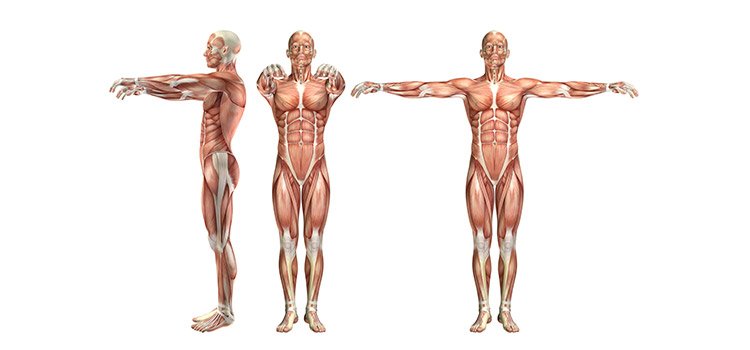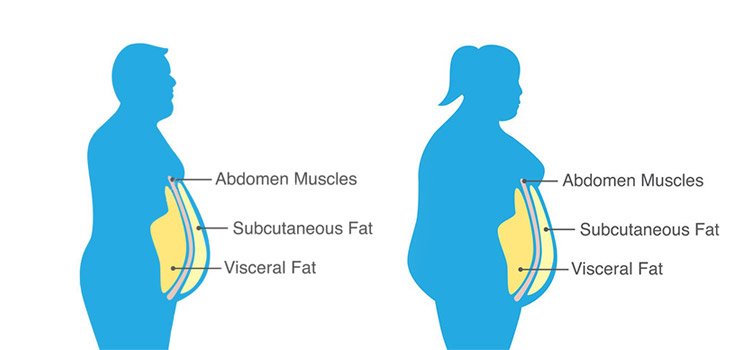All about Body Composition Analysis (BCA)

It is a method of describing what the body is made of, differentiating between fat, protein, minerals and body water to give a snapshot of your health. It describes your weight more accurately and provide a better glimpse into your overall health than traditional methods. Body composition analysis can accurately show changes in fat mass, muscle mass and body fat percentage
BCA includes the following
1. BMI – Body Mass Index
It is a person’s weight in kilograms divided by the square of height in meters. BMI is an inexpensive and easy screening method for weight category – under weight, healthy weight, overweight and obesity. Adults 20 and older can interpret their BMI based on the following standard weight status categories. These are the same for men women of all ages and bogy types.
| BMI | Weight Status |
| Below 18.5 | Under weight |
| 18.5 to 24.9 | Ideal (Normal) |
| 25 to 29.9 | Over weight |
| 30 and above | Obesity |
2. BMI calculator

BMI is a simple calculation using a person’s weight and height. The formula is BMI = Weight in Kgs divided by Height in meters multiplied by Height in meters

3. Body Fat Percentage (BFP)

It is the total mass of fat divided by total body mass multiplied by 100. BFP is a measure of fitness level since it is the only body measurement which directly calculates a person’s relative body composition without regard to height and weight.
The percentage of body fat is an individual varies according to the age and sex. It is dependent on many factors as well as behavioral factors such as lack of exercise and excessive food intake. Due to varying factors it is more difficult for certain people to reduce body fat stored in abdominal region.
Following is the normal body fat percentage for Men and Women.
Male
| Age | Percentage |
| 20 – 39 years | 8 – 19% |
| 40 – 59 years | 11 – 21% |
| 60 – 79 years | 13 – 24% |
Female
| Age | Percentage |
| 20 – 39 years | 21 – 32% |
| 40 – 59 years | 23 – 33% |
| 60 – 79 years | 24 – 35% |
Book your
Fat Reduction Procedure now!
4. Muscle Fat

Intramuscular fat is generally considered to be any fat ( including a fat between muscle groups and within a muscle) found beneath the fascia of a muscle. Intramuscular fat is the visible found within a muscle.
Muscle mass can make you heavier and increase your BMI. Because muscles are more dense and heavier than fat, body builders and other professional athletes like football players are often considered obese or overweight based on their BMI alone. Our body cannot turn fat into muscle and reverse is also true
5. Chronological Age and Body Age / Biological Age

CHRONOLOGICAL AGE
Your chronological age is the amount of time that has passed from your birth to the given date. It is your aging terms of years, months, days, etc. This is the primary way people define your age. It is also a primary risk factor for chronic disease, mortality, and impairments to bodily function.
BIOLOGICAL AGE/ BODY AGE
The basic idea behind biological age is that aging occurs as you gradually accumulate damage to various cells and tissues in the body. It is also known as physiological or functional age. Biological age differs from chronological age because it takes into consideration a number of factors other than just the day you were born.
Biological age may vary depending on your lifestyle, diet, exercise, sleep, attitude, stress, etc. Depending on your genetics and life habits your biological age will be higher or lower than your chronological age.
6. Visceral Fat

Visceral fat is a type of body fat that is stored within the abdominal cavity. It is located near several vital organs, including the liver, stomach, and intestines. It can also build up in the arteries. Visceral fat is sometimes referred to as active fat because it can actively increase the risk of serious health problems. We can reduce our visceral fat through exercise. Visceral fat cannot be removed from the body through any non-invasive or invasive procedures can reduce visceral fat through the following methods:-
- Exercising at least 30 minutes every day
- Food habit with a healthy diet
- Avoid smoking and alcohol
- Reduce drinks with sugar
- Healthy sleep
Causes of visceral fat
- Fat gets stored when you consume too many calories and have too little physical activities. Some people tend to store fat around their belly rather than on the hips because of their genes
- In women getting older can shift the body stores fat, especially after menopause women’s muscle mass decreases and their fat increases. As women age, they are more likely to develop more visceral fat in the belly, even if they don’t put on weight.
- In menage and genetics play a role in developing visceral fat. Drinking alcohol can lead to more belly fat.
7. Basal Metabolic Rate (BMR)

BMR is the number of calories your body needs to accomplish its most basic life-sustaining functions. Even when resting your burn calories by performing basic functions to sustain life such as breathing, circulation, nutrient processing, cell production, etc. BMR is often used interchangeably with resting metabolic rate. BMR is the minimum number of calories required for basic functions at rest. Factors affecting BMR Age, sex, surface area, climate, body temperature, habits, drugs, hormones, and pregnancy. Most Men have a BMR of about 1600 – 1800 kcal/day and most Women have a BMR of about 1550 kcal/day.
7. Waist – hip ratio (WHR)
It is the dimensionless ratio of the circumference of the waist to that of the hips. This is calculated as waist measurement divided by hip measurement.
WHR = Waist circumference in cm
Hip circumference in cm
It is a quick measure of fat distribution that may help indicate a person’s overall health. People who carry more weight around their middle than their hips may be at a higher risk of developing health conditions.
Your natural waist line hits at the area between the top of your hip bone and bottom of your rib cage. Your waist line may be bigger or smaller depending on your genetics, frame style and life style habits.
Ideal WHR
- Men should have a waist to hip ratio 0.99 or less
- Women should have waist to hip ratio of 0.85 or less
The WHR being used as an indicator or measure of health and the risk of developing serious health conditions. Body mass index and waist size can both provide clues about your health status and risk of developing medical problems.
Checkout our Non-Invasive Fat Reduction procedure: Coolsculpting’s page for more information.
For more details / to know more or to book an appointment call us at +91 97467 41883
Book your
Fat Reduction Procedure now!
Blog Categories
- Anti-Ageing (9)
- Body Contouring (5)
- CoolSculpting (3)
- Cosmetic Treatment (12)
- Fat Reduction (3)
- General (12)
- Hair Care (4)
- Laser Skin Treatments (7)
- Picocare (1)
- Product Launch (2)
- Sculpsure (2)
- Skin Brightening (6)
- Skin Care Tips (2)







